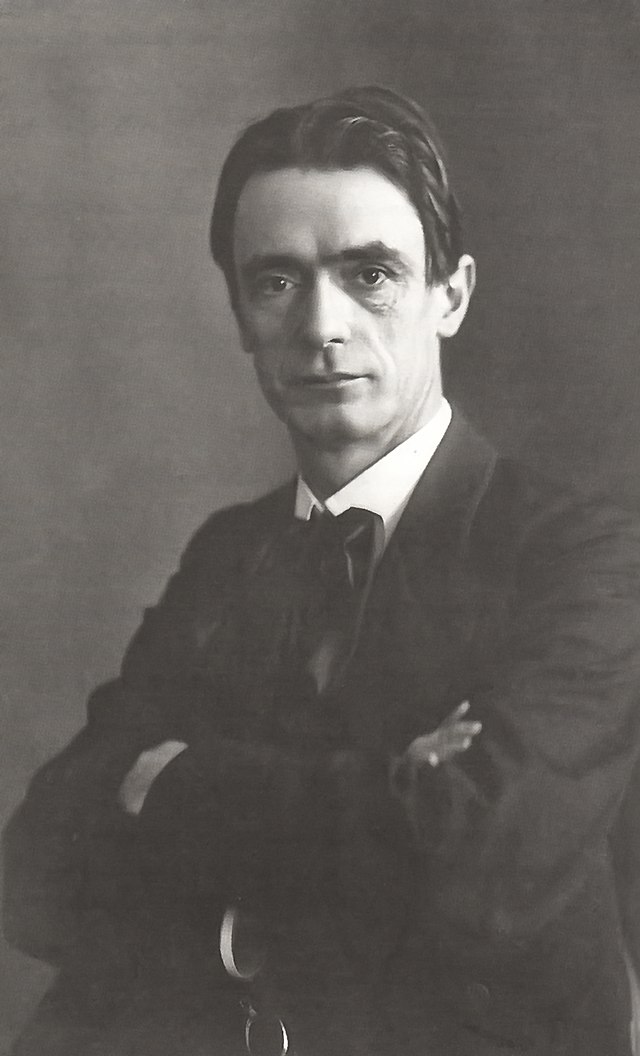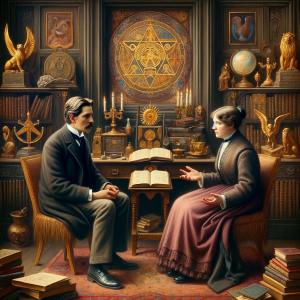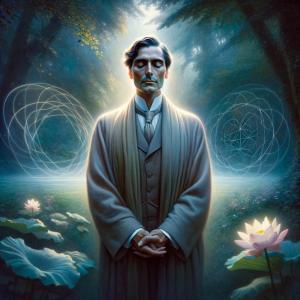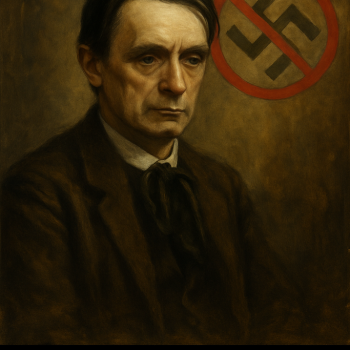Rudolf Steiner’s world was vast, mystical, and yet practical—his mind seemed to roam as easily through the stars as through a farmer’s field. Born in 1861, this Austrian thinker’s early work in philosophy and natural science laid the foundation for later explorations that ranged from mysticism and education to agriculture, architecture, and even the arts. He was, in the truest sense, a polymath, though many knew him simply as a spiritual teacher.
Steiner’s philosophy of Anthroposophy, which emerged in the early 20th century, drew from Western esotericism, Christian mysticism, and what he described as clairvoyant insight. It was not meant as an abstract philosophy for armchair speculation. Rather, it was a way of seeing—one that sought to harmonize the material world with cosmic forces. His aim was spiritual awakening, yes, but also practical renewal in the everyday fields of education, farming, medicine, and art.

A Mystic Polymath
In education, Steiner left an indelible mark. He founded the Waldorf schools, where imagination and creativity were placed at the heart of learning. For him, it was not enough to train the intellect alone—students had to be nourished as whole beings: mind, heart, and hands. It is striking that his approach, developed more than a century ago, still feels progressive today.
In agriculture, Steiner gave us biodynamic farming, a method that treats soil and plants as living systems, weaving spiritual rhythms with ecological practice. Some dismiss it as mystical, others embrace it as visionary—but either way, the modern organic farming movement owes him a debt.
He also designed buildings of unusual beauty and form, most notably the Goetheanum in Switzerland, which became the center of the Anthroposophical Society. With its flowing, organic architecture, the Goetheanum still stands as a kind of temple to spiritual modernism. Even architects like Frank Lloyd Wright are said to have taken cues from Steiner’s designs.
And then there was art: theater, sculpture, painting, and the creation of Eurythmy, a new form of movement that sought to make visible the inner dynamics of speech and music. Can you imagine? A dance that lets language and melody take shape in the air.

Theosophical Roots and the Breakaway
Steiner’s early spiritual journey began with the Theosophical Society, founded by Madame Helena Blavatsky. Theosophy’s mixture of Eastern and Western mysticism spoke to him, and he quickly rose to prominence, serving as secretary of its German Section. Yet his own vision soon took him in a different direction.
For Steiner, Christ was not just one teacher among many, but the central figure in human spiritual evolution. His emphasis on esoteric Christianity set him apart from the Theosophical Society’s more Hindu and Buddhist leanings. The rift deepened when the Society created the Order of the East, promoting the Indian boy Jiddu Krishnamurti as a new messiah. This was a step too far for Steiner, and in 1912–1913 he broke away, founding the Anthroposophical Society.
There is even a curious story told in esoteric circles: when members of the Theosophical leadership later tried to recruit the Greek mystic Daskalos (Stylianos Atteshlis) to replace Krishnamurti, Steiner is said to have appeared to Daskalos in his astral body, urging him to refuse. Whether one takes this literally or as legend, it illustrates how intensely Steiner’s presence was felt in spiritual movements of the time.

ChatGPT
Steiner’s Anthroposophy
Anthroposophy—literally “wisdom of the human being”—was Steiner’s gift to the world. Through it, he sought to unite science, art, and spirituality into a living whole. He described it as a “spiritual science”, not to replace religion, but to complement it: offering methods of meditation, concentration, and moral development through which individuals might cultivate direct perception of spiritual realities.
This was not mysticism reserved for the chosen few. Steiner insisted that the spiritual world is open to all. His exercises—visualizations, focused thought, and practices of inner discipline—were meant to empower ordinary people to sharpen their spiritual senses. His vision was that individuals could not only awaken themselves, but also consciously participate in the ongoing spiritual evolution of humanity.
Steiner’s Legacy
Looking back, one can only marvel at the sheer breadth of Steiner’s work. He offered new paths in farming, schooling, medicine, and the arts—all of which continue to grow and adapt a century later. But at the heart of it all was a conviction: that human beings are not bound by material existence alone.
He believed we can lift our perception beyond the surface of things, into the currents of spirit moving through time and cosmos. His legacy was not meant to create disciples, but to inspire seekers—people willing to cultivate their own insight and take responsibility for their own spiritual growth.
Was Steiner ahead of his time, or was he simply answering the hunger of an age searching for meaning beyond science and industry? Perhaps both. What cannot be denied is that his vision continues to ripple outward, shaping classrooms, farms, clinics, and theaters across the globe.
In the end, Anthroposophy’s aim was simple yet profound: to integrate spiritual knowledge with practical life, for both personal fulfillment and the greater good of humanity. And perhaps that is Steiner’s most enduring message—that the sacred is not far away, but can be woven into the very fabric of daily living.















